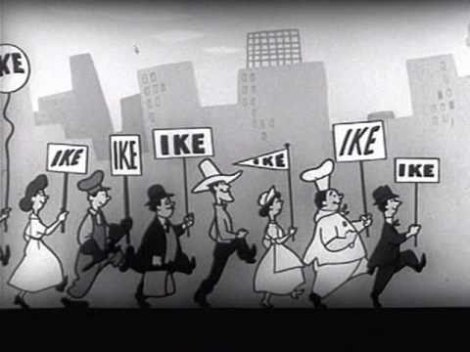The 2004 campaign was the first to experience viral videos and the widespread access through Internet. This election was not like the few previous elections. Campaigns were similar to those during the Cold War Era. The war in Iraq and terrorism were on the minds of all Americans. These topics overshadowed the domestic issues that had been the center of past campaigns. Similar to Cold War campaigns, Bush’s advertisements focused on portraying him as a strong commander-in-chief. His campaign was more negative than many incumbent campaigns of the past and much more negative than his advertisements in 2000. The Bush campaign used an advertising tactic common among well-known candidates. This tactic attempts to push out advertisements that define your lesser-known opponent before they can define themselves. One memorable and entertaining television ad by the Bush campaign showed Kerry windsurfing back and forth and featured classical music to make it humorous. This advertisement was one of many that tried to define Kerry as a flip-flopper.
Kerry started out his campaign with traditional, biographical advertisements similar to the Clinton campaign. These advertisements were positive and tried to relate Kerry to the common voter, a tactic used in campaigns during the Cold War. Kerry’s campaign had to turn to the quick response style developed in Clinton’s campaign due to the attack ads from his opponent. Response advertisements were aired the same day as the attack ads and received nightly news coverage. The Internet served as a medium for campaigns to run advertisements that were too edgy or provocative for television. Web advertisements were more harsh and radical than attack ads aired on television. The new web advertisements targeted specific, opinionated audiences and are now a key part of modern campaigns. Hollywood personalities contributed to advertisements in a campaign against Bush during this election. The presence of Hollywood personalities was not very noticeable in 2004, but celebrities played a big role in the campaigns that followed.
It was clear in 2008 that presidential ad campaigns had come a long way since jingles and cartoons. This year marked an unprecedented growth in the quantity of advertisements and the cost. This election year television advertisements were made up of about $2.8 billion in campaign funds nationwide. Around $2 billion of this amount was spent on local broadcast commercials. Obama’s campaign spent approximately $310 million and McCain’s campaign spent about $136 million.
Growing social media platforms like Facebook drove campaigns to create television advertisements that had viral potential. The Internet led to more aggressive ads with bold statements and humor in hopes that viewers would forward the advertisements online. Social media sped up the news cycle and the pace of rapid response advertisements. The Obama campaign was the first to utilize social media to promote the candidate and reach out to a younger demographic than targeted in the past. For a campaign’s television advertisements to become viral they had to be relatable to the younger users of social media. Obama’s campaign produced advertisements that featured celebrity supporters and television personalities. The fusion of popular culture with politics in advertisements was popular with younger Americans and reached people not typically interested in politics.
Many of Obama’s advertisements used the association tactic and attempted to link McCain to George W. Bush who was unpopular at the time. His campaign included the heartwarming biographical advertisements custom to new candidates. McCain and Obama had never held the position of Vice President or President before and both campaigns promoted each candidate as a change from Bush. The wars in Iraq and Afghanistan were the most important issues this year, along with the financial crisis. Obama’s campaign played into the financial concerns of Americans by including economic terms in slogans. Statements like, “Can we afford John McCain,” were played in many televised advertisements. The youth played a major role in this campaign and Obama’s campaign presented his older opponent, McCain, as out of touch. The Obama campaign in 2008 did the better job labeling their candidate as a change in the right direction by using new media to promote their advertisements.
